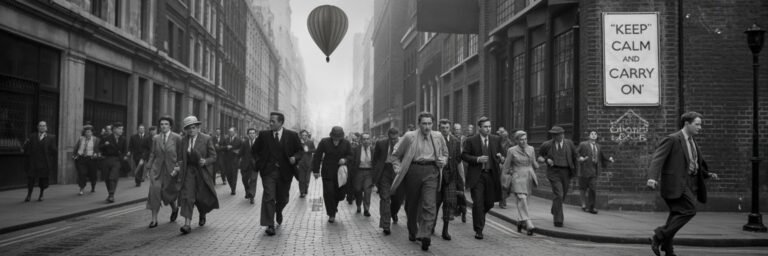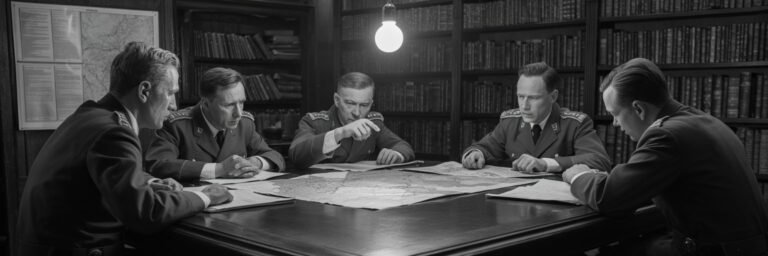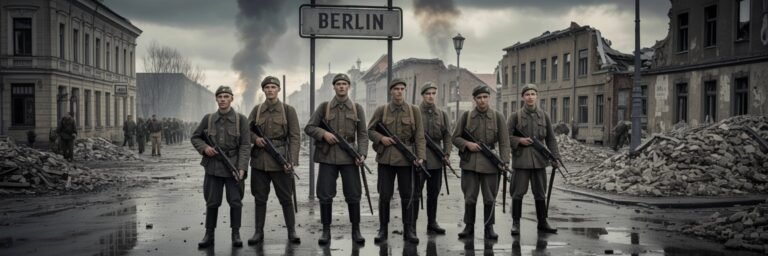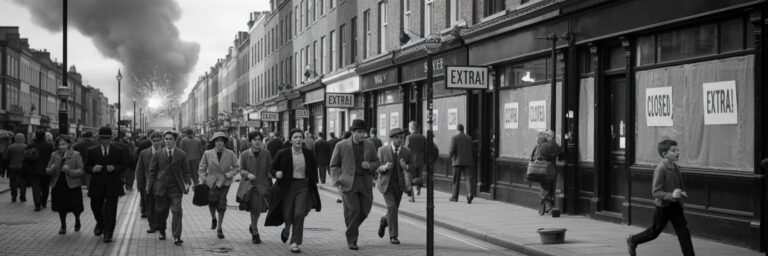INTRODUCTION
A tumultuous period when catastrophe and hope coexisted, World War II was a time of profound transformation that swept every facet of human existence into its whirlwind. As nations engaged in fierce combat on fronts across the globe, the realities of life on the home front provided a complex backdrop to the global conflict. Analyzing the shift in everyday life during this period not only provides insight into the socio-political dynamics of the era but also unravels the innate resilience of humanity. Sit back, as we embark on a journey back in time, unfolding the intricacies of everyday life in the time of World War II.
HISTORICAL BACKGROUND
World War II, between 1939-1945, was a vastly destructive and transformative period in human history affecting every continent and nearly every aspect of human life. Major combatants, including the United States, Great Britain, the Soviet Union, and Japan, grappled with the exigencies of war. Meanwhile, everyday life continued to evolve, providing a telling glimpse into the human condition under extreme circumstances.
The societies of these nations, amidst the relentless assault of war, underwent sweeping changes. In the United States, an economic boon counterbalanced the harsh austerity programs and rationing. Factories repurposed to churn out armaments at astonishing rates, meaning jobs were plentiful, and the populace as a whole prospered while the war raged abroad.
In contrast, life in the Soviet Union and Japan was fraught with hardship. The Stalinist regime imposed brutal discipline, with food supplies often redirected to front lines, leaving citizens home in dire straits. Life in Japan was one of militaristic rigor and strict codes, with reduced rations and personal freedoms.
THEORIES AND INTERPRETATIONS
Historians have proposed various theories of social transformation during this period. John Costello, in “The Pacific War,” masterfully traced how America’s war economy resulted in robust employment opportunities further leading to demographic shifts as people relocated for jobs, altering familial structures of the time.
On the other extreme side, the theory of Sheila Fitzpatrick sheds light on the collective suffering in the Soviet Union, arguing that a nation found unity through shared grief and adversity.
In Japan, as wealth and resources steadily declined, the concept of “kyosei,” meaning co-existence and symbiotic survival, took hold, a theory suggested by Tetsuo Najita in his analysis of wartime Japanese society.
MYSTERIES AND CONTROVERSIES
World War II is a realm of intense historical investigations, and the realm of everyday life is not immune to this scrutiny. The mystery of how people in wartimes bore the hardships, where they found the will to endure, and the strife to survive is often pondered upon.
Equally fascinating is the paradox of normalcy people found within the chaos of war—an enigma that continues to bewilder historians. Case in point being, during air raids, Londoners seeking shelter, playing cards, and hosting impromptu concerts in London Underground stations—an extraordinary adaptation to wartime bombing!
Another area of controversy covers what Susan Carruthers referred to as “war as liberation” in “War Behind the Wire”— a subject of many POW memoirs, speaking to the idea of survival, comradeship, and the creation of a “homosocial” society in war.
SYMBOLISM AND CULTURAL SIGNIFICANCE
World War II reshaped cultural symbols and social dynamics. The war introduced iconic images—such as “Rosie the Riveter,” embodying female empowerment in America, and Soviet war posters hailing the collective spirit of the nation.
Cultural significance extends to food as well, with war-time rationing leading to innovations like SPAM and Kraft Macaroni & Cheese, which transformed food habits and continued its legacy beyond the war years.
MODERN INVESTIGATIONS
Modern-day historians continue to research the rear effects of World War II, often using sociological tools to unearth new narratives. Studies have investigated the impact of the war on the roles of women, minorities, and immigrant communities, highlighting their substantial contributions to war efforts.
Recent research is also uncovering the profound psychological effects war had on civilian populations, particularly children, adding another dimension to our understanding of World War II’s human cost.
LEGACY AND CONCLUSION
The everyday life of World War II wasn’t merely about survival, but a dramatic alteration in societal fabric, social norms, and personal identities. The war pushed boundaries like never before, leading to women participating in the workforce, the rise of new cultural symbols, and substantial shifts in demographic and familial structures.
In conclusion, the epoch of World War II was a crucible of change, impacting societies at every level and laying the foundations of modern life. Its legacy continues to shape our lives, demonstrating the stark resilience and adaptability of humanity in the face of untold adversity. Thus, World War II wasn’t only an event where geopolitical borders were redrawn, but also where the boundaries of everyday life were redefined, creating a new panorama that continues to reverberate in our lives today.






